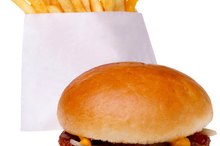Metabolic Functions of the Liver
The liver, weighing about three pounds in a human, is a vital organ necessary for survival. It is located in humans on the right side of the upper abdomen and consists of four unequally sized lobes. The many functions of the liver are carried out by the hepatocyte. In the “Biochemistry” textbook authored by Stryer the liver is described as an altruistic organ because it synthesizes proteins, glucose and fats, which are released into the blood and used by other organs in the body for energy (See Reference 1). Reported in the “Journal of Hepatology” the liver can regulate its growth and after destruction by surgical removal or toxic injury hepatocytes will proliferate and the liver will regenerate (See Reference 2).
Protein Metabolism
The liver synthesizes non-essential amino acids from other amino acids, glucose and fatty acids. The enzymes alanine and aspartate transaminases convert amino acids that are in abundance to others that are needed by the body. A high concentration of these enzymes in the blood indicates liver damage. The liver makes most plasma proteins including albumin and produces coagulation factors. The liver breaks down proteins and removes the toxic ammonium ion by converting it to urea (See References 3 and 4).
Glucose Metabolism
How Is a Triglyceride Broken Down?
Learn More
Reported in the May 2004 issue of the “International Journal of Biochemistry and Cell Biology” the liver plays a prominent role in regulating blood glucose levels (See Reference 5). After a meal carbohydrates are broken down to glucose in the small intestine and glucose is absorbed into the bloodstream. After absorption glucose is directly transported to the liver. The liver removes excess glucose from the blood and stores the glucose as glycogen, which is a polymer of glucose units. In between meals, hepatocytes break down the glycogen and release glucose back into the bloodstream for use by other cells of the body. If the body requires more glucose than what is stored as glycogen the liver will make glucose from other molecules like fatty acids and amino acids.
Fat Metabolism
After digestion fats are also transported to the liver. These fats are packaged into protein complexes in the liver and then transported to other cells in the body including the fat-storing cells, also known as adipocytes. The liver also synthesizes triglycerides from excess carbohydrates and proteins. Because fats in the form of triglycerides are not water soluble they must be transported to other cells by proteins. The lipoprotein transport molecules are made in the liver. These lipoproteins are the VLDLs that are measured in a lipid profile. The liver additionally synthesizes cholesterol from fatty acids (See References 3 and 4).
Bile Production
7 Functions of the Liver
Learn More
Hepatocytes make bile, a yellowish-brown fluid that aids in fat digestion. The gall bladder, which is located just beneath the liver, stores bile until it is released into the small intestine. Bile salts, the main component of bile are made from cholesterol in the liver. The bile salts emulsify fats and break the fat down into smaller units. This increases the surface area of the fat so that enzymes called lipases can further digest the fat.
Waste Metabolism
In addition to removing ammonia from the body the liver also processes bilirubin, an insoluble breakdown product of hemoglobin. Hemoglobin, the main protein in red blood cells, is metabolized to bilirubin in the liver and then secreted in bile and removed from the body in feces or urine (See References 3 and 4). The total level of bilirubin in the blood is marker for liver function.
Detoxification
The liver is the primary organ involved in the detoxification of drugs and poisons. Hepatocytes have multiple enzyme systems that breakdown foreign molecules, called xenobiotics, into water soluble compounds that can be excreted. In most cases the liver metabolizes the foreign molecules into less toxic compounds. However, as pointed out by the authors of an article on the liver published in the April 2004 issue of “Pediatrics” sometimes the xenobiotics are metabolized to toxic intermediates and the liver becomes a target for this toxicity (See Resource 1).
Vitamin and Mineral Storage
The liver stores the fat-soluble vitamins, A, B12, D, E, and K and the minerals, iron and copper. The liver stores the vitamins and minerals after digestion until they are required by other cells to conduct a specific biological function (See References 3 and 4).
Related Articles
References
- Stryer, L. 1995. Biochemistry, 4th edition. New York: W. H. Freeman. ISBN 0716720094
- Pubmed.gov: “J Hepatol”: Liver regeneration.
- Newworldencyclopedia.og: Liver.
- Colostate.edu: Pathophysiology of the Digestive System.
- Pubmed.gov: “International Journal of Biochemistry and Cell Biology”: Hepatocytes: critical for glucose homeostasis.
Writer Bio
Melissa Lingohr-Smith is a freelance medical writer with over 10 years experience in research science, teaching and scientific writing. She has published scholarly articles, received grant funding in diabetes research and is experienced in biochemistry, molecular biology, endocrinology, physiology, toxicology, pharmacology, clinical studies and FDA approvals. She has a Ph.D. in pharmacology/toxicology.







